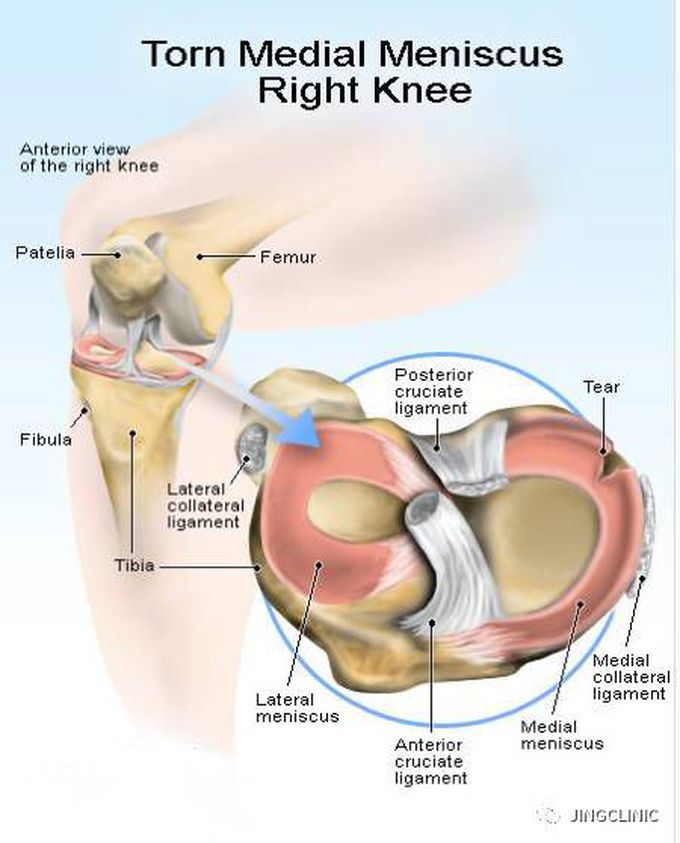

torn meniscus
What is a torn meniscus? There are three bones in the knee, the femur, tibia and patella. The endsof those bones are covered with cartilage (a smooth material that cushions thebone and allows the joint to move easily without pain). The cartilage acts as ashock absorber. Between the bones of the knees are two crescent-shaped discs ofconnective tissue, called menisci. These also act as shock absorbers to cushionthe lower part of the leg from the weight of the rest of the body. What causes a torn meniscus? Meniscus tears can happen during a rotating movement while bearing weight,such as when twisting the upper leg while the foot stays in one place duringsports and other activities. Tears can be minor, with the meniscus stayingconnected to the knee, or major, with the meniscus barely attached to the kneeby a cartilage thread. What are the symptoms of a torn meniscus? The following are the most common symptoms of a torn meniscus. However,each individual may experience symptoms differently. Symptoms may include: Pain, especially when holding the kneestraight Swelling and stiffness Knee may catch, click, or lock Knee may feel weak The symptoms of a torn meniscus may resemble other medical conditions orproblems. Always talk with your healthcare provider for a diagnosis. How is a torn meniscus diagnosed? In addition to a complete medical history and physical exam, diagnosticprocedures for a torn meniscus may include the following: X-ray. A diagnostic test that uses invisible electromagneticenergy beams to produce images of internal tissues, bones, and organs ontofilm. Magnetic resonance imaging (MRI). A diagnostic procedure that uses acombination of large magnets, radiofrequencies, and a computer to producedetailed images of organs and structures within the body. It can oftendetermine damage or disease in a surrounding ligament or muscle. Arthroscopy. A minimally-invasive diagnostic andtreatment procedure used for conditions of a joint. This procedure uses a small,lighted, optic tube (arthroscope) that is inserted into the joint through asmall incision in the joint. Images of the inside of the joint are projectedonto a screen. They are used to evaluate any degenerative and/or arthriticchanges in the joint. The procedure also may detect bone diseases and tumors aswell as determine the cause of bone pain and inflammation. How is a torn meniscus treated? Specific treatment for a torn meniscus will be discussed with you by yourhealthcare provider based on: Your age, overall health, and medicalhistory Extent of the injury Your tolerance for specific medicines,procedures, and therapies Expectation for the course of the injury Your opinion or preference Treatment may include: Icing Medicine to relieve pain and reduceinflammation, such as ibuprofen Muscle-strengthening exercises Arthroscopic surgery What are the complications of a torn meniscus? An untreated torn meniscus can result in instability of the knee,persistent pain, and increase your risk of osteoarthritis. When should I call my healthcare provider? Call your healthcare provider if your knee: Locks or catches or makes a clicking,popping, or grinding sound Is painful and/or swollen Feels weak or buckles Key points about a torn meniscus Torn meniscus is caused by a twistingmovement of the knee while bearing weight. A torn meniscus causes pain, locking orclicking, and weakness of the knee. Exercises, medicine and arthroscopy may beused to treat a torn meniscus.

